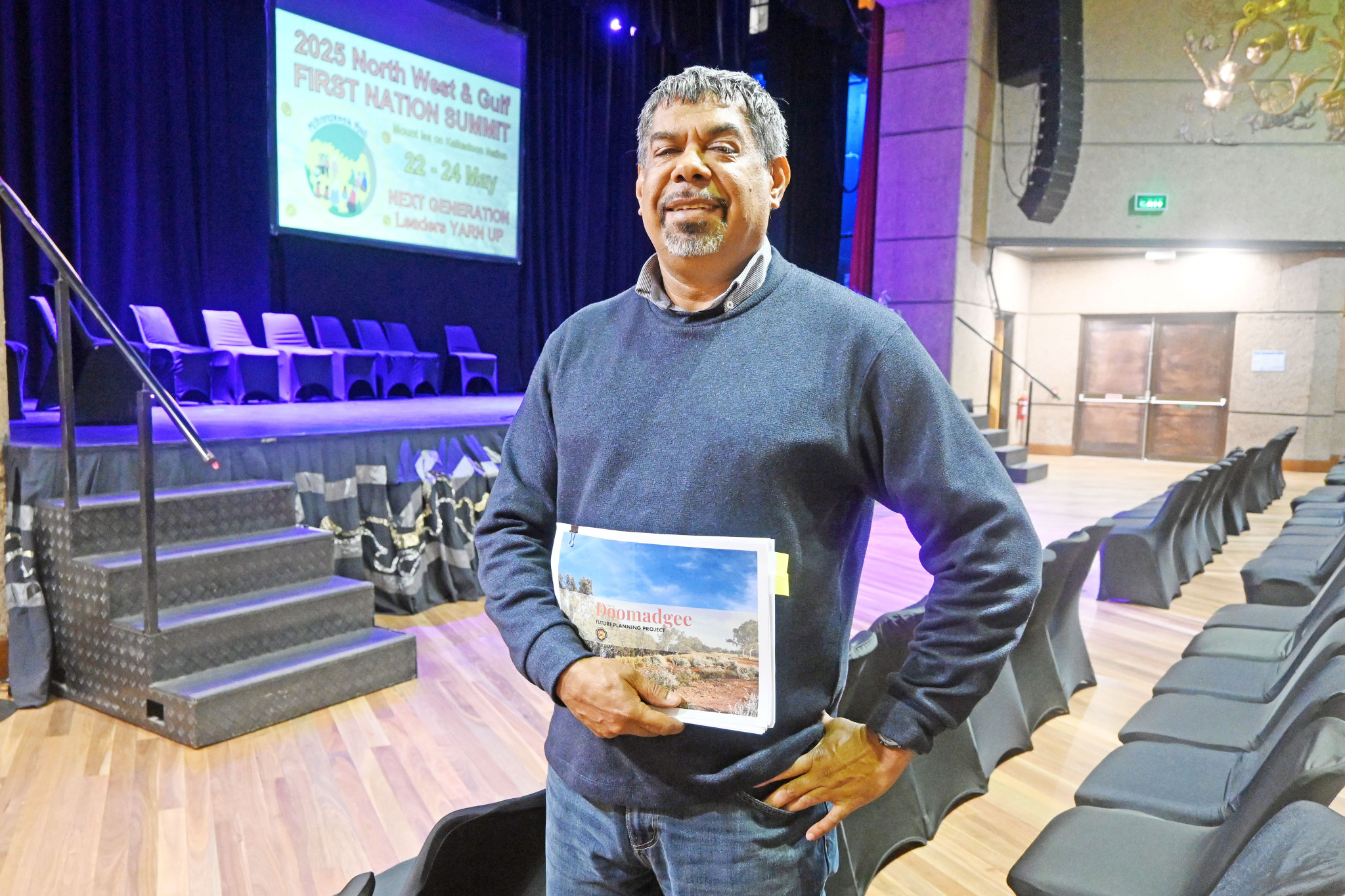Business
28 May, 2025
Doomadgee council has big plans to lift local business
A dozen small businesses have been established in the town in the past 24 months with assistance from the council.

Doomadgee Aboriginal Shire Council plans to relocate its commercial space and increase the number of small businesses in the township as community leaders focus on driving local autonomy to create new economic opportunities.
Speaking at the Mithangkaya Nguli YPA North West and Gulf First Nation Summit in Mount Isa last week, Doomadgee Aboriginal Shire Council chief executive officer Troy Fraser said about a dozen small businesses have been established in the township in the past 24 months with assistance from council.
Some of the businesses included panel repair cleaning, a bush medicinal product retailer, personal training, catering, and beef production.
Mr Fraser said it was part of a broader strategy to establish a new business district about one kilometre north of the township along Savannah Way, which can see more than 250 travellers pass along the highway each week during the peak season.
“We are doing this in a culturally sensitive way, working with people at their pace,” he said.
“We work to ensure there is a range of support people to get you on the right track and be successful.”
Mr Fraser said Doomadgee leaders sought to overcome the economic disadvantages inherent to the community due to the initial placement of the original Brethren mission almost a century ago.
“Doomadgee is a former mission which historically suffered under the discriminatory decision making and poor planning of the colonial mission,” he told the gathering.
“Indigenous communities were established as a point to gather surrounding Indigenous people and predominantly house the children in dormitories.
“These communities were designed for disadvantaged economic development. They were built at a dead end.
“Other towns were built on an economic foundation and hence the main road and highway runs through the centre of town.”
Mr Fraser said his council had recently completed its Doomadgee Future Planning Project, which is a report detailing local strategies to attract tourists to the township.
“Through the project, we can create passion and opportunities for future generations that will then create financial freedom. This will also help many people in our community rise above the poverty line and live comfortably, instead of struggling to get by on a daily basis,” he said.
Mr Fraser said the policies of repeated state and federal governments continue to constrain economic opportunities for Indigenous residents and are forcing communities to remain reliant on handouts and government funding.
He said government funding did not take into consideration the unique culture of each Indigenous community in Australia.
“To get the best information and best process all these underlying, non-written lores must be upheld,” he said.
“That is why we as Indigenous people must be at the helm of all processes when conducted in community or about us.
“It is up to each one of us, the changemakers in particular environments, to find strategies to be able to close the gap.
“Our culture governs every step. And unless Closing the Gap sees each of our community cultures individually, it will never work to Close the Gap.”